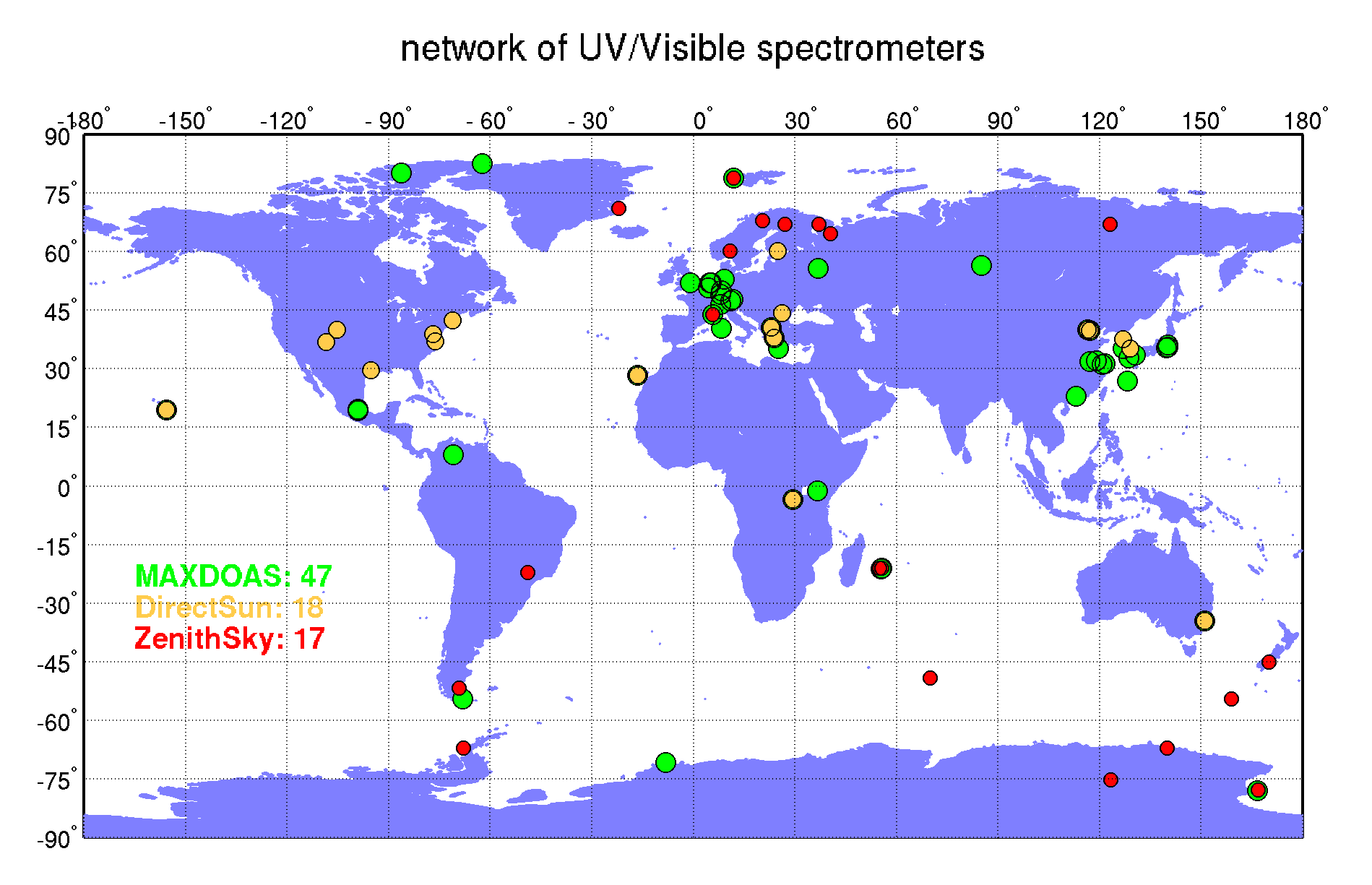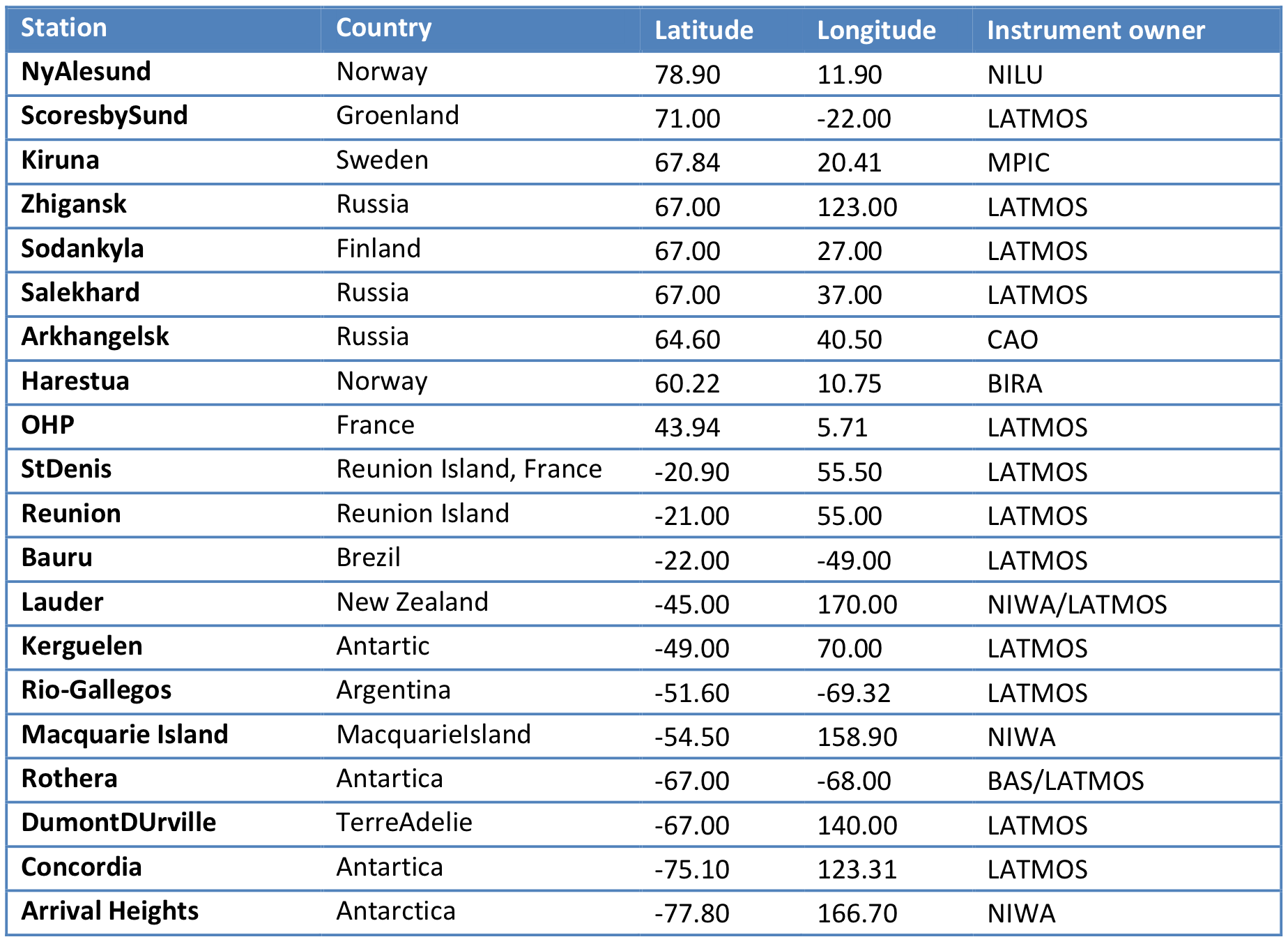FRM4DOAS stations
The demonstration of the FRM4DOAS processing system will be based on a selection of instruments and sites available from project partners only. The 14 sites planned for integration are listed in the Work Packages section. They cover a large variety of atmospheric conditions, like urban/remote for tropospheric NO2, and mid-latitude/polar for stratospheric NO2 and total O3. In the long-term perspective, the processing system could be further extended to additional sites. The current status of the UV-vis DOAS network, including the list of potential candidate stations, is described below.
Status of the UV-vis DOAS network at the start of FRM4DOAS
A large number of UV-Vis DOAS instruments are currently operated worldwide for the regular monitoring of NO2, ozone and several other species. These can be classified according to their observation geometry and their link to established networks (see below).

MAX-DOAS instruments
All instruments classified as MAX-DOAS systems are capable of performing scans in elevation. There is however a large diversity of designs when considering the specificities of each system. Some instruments are designed to also allow for zenith-sky twilight observations (needed for NDACC stratospheric monitoring), others allow for azimuthal scans in addition to elevation scans. The latter are usually refered to as 2D MAX-DOAS systems. Finally some systems are designed to alternate between elevation scans and direct-sun measurements through a diffusor plate and sun-tracking system.

SAOZ and zenith-sky DOAS instruments
Zenith-sky DOAS instruments have been largely deployed in the nineties in support of the ozone layer monitoring as part of the NDACC. These systems are similar in concept to MAXDOAS, but measurements are usually performed only in zenith direction and they are optimized for low signal during twilight conditions.
Pandora instruments
Pandora systems have been initialy developed at NASA using small Avantes spectrometers. Under the impulse of ESA, some of the Pandora instruments are currently being organized in a coordinated network for Fiducial Reference Measurements called PGN.


